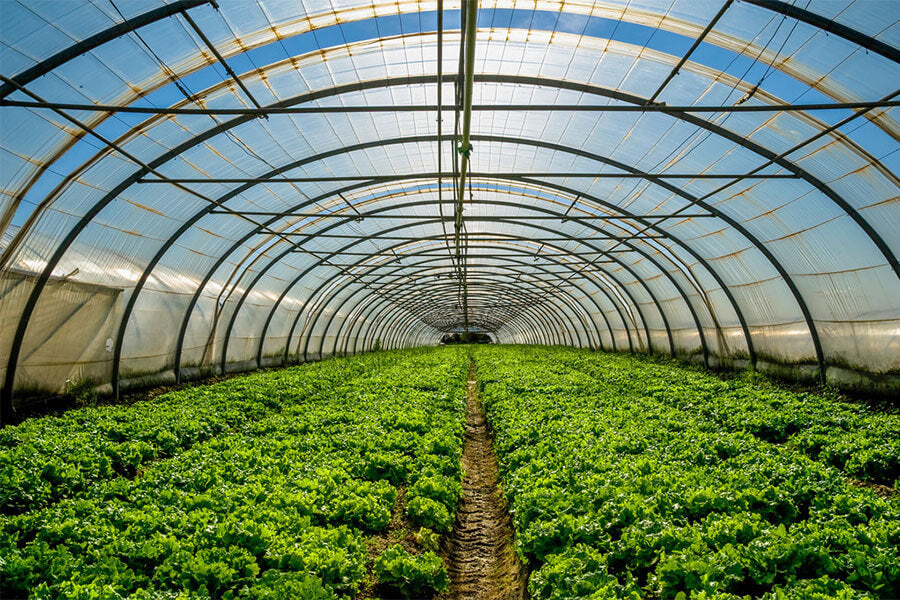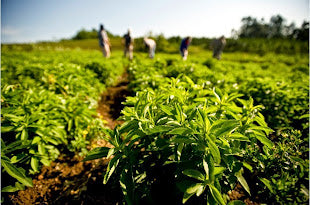
What is stevia?
Stevia is an intensely sweet-tasting plant that has been used to sweeten beverages and make tea since the 16th century.
The plant is originally native to Paraguay and Brazil but is now also grown in Japan and China. It is used as a non-nutritive sweetener and herbal supplement.
A non-nutritive sweetener is one that contains little to no calories. Stevia is used as a healthful alternative to added sugar in many meals and beverages.
The United States Food and Drug Administration (FDA) banned the marketing of stevia as a food additive in 1987. However, stevia regained its status as a sweet, sustainable dietary ingredient in 1995. The sweetener has since soared in popularity, with a 58 percent boost in new products that contain stevia.
This breakdown looks at the characteristics, uses, health benefits, and side effects of stevia, as well as considering its overall safety.

Fast facts on stevia
- Stevia is primarily grown in Brazil, Paraguay, Japan, and China.
- The natural sweetener tastes 200 to 300 times sweeter than table sugar.
- Stevia can be classified as “zero-calorie,” because the calories per serving are so low.
- It has shown potential health benefits as a healthful sugar alternative for people with diabetes.
- Stevia and erythritol that have been approved for use in the United States (U.S.) and do not appear to pose any health risks when used in moderation.
Stevia, also known as Stevia rebaudiana Bertoni, is a bushy shrub that is part of the sunflower family. There are 150 species of stevia, all native to North and South America.
China is the current leading exporter of stevia products. However, stevia is now produced in many countries. The plant can often be purchased at garden centers for home growing.
As stevia is 200 to 300 times sweeter than table sugar. It typically requires about 20 percent of the land and far less water to provide the same amount of sweetness as other mainstream sweeteners.
Stevia contains eight glycosides. These are the sweet components isolated and purified from the leaves of stevia. These glycosides
- stevioside
- rebaudiosides A, C, D, E, and F
- steviolbioside
- dulcoside A
Stevioside and rebaudioside A (reb A) are the most plentiful of these components.
The term “stevia” will be used to refer to steviol glycosides and reb A throughout this article.
These are extracted through a process of harvesting the leaves, then drying, water extraction, and purification. Crude stevia, the processed product before it is purified, often carries a bitter taste and foul smell until it is bleached or decolored. It takes roughly 40 steps to process the final stevia extract.
Stevia leaves contain stevioside in a range of concentrations up to around
Some of the common trade names for stevia sweeteners are:
- Enliten
- PureVia
- Rebiana
- Stevia
- Steviacane
- Stevia Extract In The Raw
- SweetLeaf
As an alternative to sucrose, or table sugar, using stevia as a sweetener carries the potential for considerable health benefits.
Stevia is considered “no-calorie” on the
The sweet-tasting components in stevia sweeteners occur naturally. This characteristic may benefit people who prefer naturally-sourced foods and beverages. The low calorie count qualifies Stevia to be a healthful alternative for diabetes control or weight loss.
Here are some of the possible health benefits of stevia.
1) Diabetes
Research has shown that stevia sweeteners do not contribute calories or carbohydrates to the diet. They have also demonstrated no effect on blood glucose or insulin response. This allows people with diabetes to eat a wider variety of foods and comply with a healthful meal plan.
Another review of five randomized controlled trials compared the effects of stevia on metabolic outcomes with the effects of placebos. The study concluded that stevia showed minimal to no effects on blood glucose, insulin levels, blood pressure, and body weight.
In one of these studies, subjects with type 2 diabetes reported that stevia triggered significant reductions in blood glucose and glucagon response after a meal. Glucagon is a hormone that regulates glucose levels in the blood, and the mechanism that secretes glucagon is often faulty in people with diabetes.
Glucagon drops when blood glucose climbs. This regulates the glucose level.
2) Weight control
There are many causes of overweight and obesity, such as physical inactivity and increased intake of energy-dense foods that are high in fat and added sugars.
The intake of added sugars has been shown to contribute an average of 16 percent of the total calories in the American diet. This has been
Stevia contains no sugar and very few, if any, calories. It can be part of a well-balanced diet to help reduce energy intake without sacrificing taste.
3) Pancreatic cancer
Stevia contains many sterols and antioxidant compounds, including kaempferol.
Studies have found that kaempferol can reduce the risk of pancreatic cancer by
4) Blood pressure
Certain glycosides in stevia extract have been found to dilate blood vessels. They can also increase sodium excretion and urine output.
A 2003 study showed that stevia could potentially help lower blood pressure. The study suggested that the stevia plant might have cardiotonic actions. Cardiotonic actions normalize blood pressure and regulate the heartbeat.
However, more recent studies have shown that stevia does not seem to impact blood pressure. Further research is required to confirm this benefit of stevia.
5) Children’s diets
Foods and beverages containing stevia can play an important role in decreasing calories from unwanted sweeteners in the diets of children.
There are now thousands of products on the market containing naturally-sourced stevia, ranging from salad dressings to snack bars. This availability allows children to consume sweet foods and drinks without the added calories while transitioning to a lower sugar diet.
Excessive sugars and calories are
6) Allergies
In 2010, the European Food Safety Committee (EFSA) reviewed existing literature to determine if there was any cause for concern regarding the potential for allergic reactions to stevia.
The reviewers concluded that “steviol glycosides are not reactive and are not metabolized to reactive compounds, therefore, it is unlikely that the steviol glycosides under evaluation should cause by themselves allergic reactions when consumed in foods.”
Even the highly purified forms of stevia extract are highly unlikely to cause an allergic reaction.
In the U.S., stevia sweeteners are
Extracts from the stevia leaf have been available as dietary supplements in the U.S. since the mid-1990s, and many contain a mixture of both sweet and non-sweet components of the stevia leaf.
The sweet components in stevia sweeteners are naturally occurring. This may further benefit consumers who prefer foods and beverages they perceive as natural.
Worldwide, more than 5,000 food and beverage products currently use stevia as an ingredient. Stevia sweeteners are used as an ingredient in products throughout Asia and South America such as:
- ice cream
- desserts
- sauces
- yogurts
- pickled foods
- bread
- soft drinks
- chewing gum
- candy
- seafood
- prepared vegetables
The stevia plant is regulated not by the FDA but by the U.S. Department of Agriculture (USDA). The lack of a GRAS status by the FDA does not mean the stevia plant is inherently dangerous.
In fact, the plant can be purchased from a variety of gardening sources in the US, grown at home, and consumed in a variety of ways, as it has been for centuries in other countries.
The potential health benefits of stevia require further study before they can be confirmed. However, be confident that stevia is safe to consume and is an ideal alternative to sugar when looking for that extra boost of sweetness.
Medically reviewed by Natalie Butler, R.D., L.D. — By Hannah Nichols on January 4, 2018

